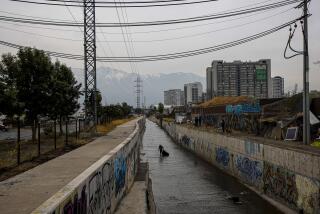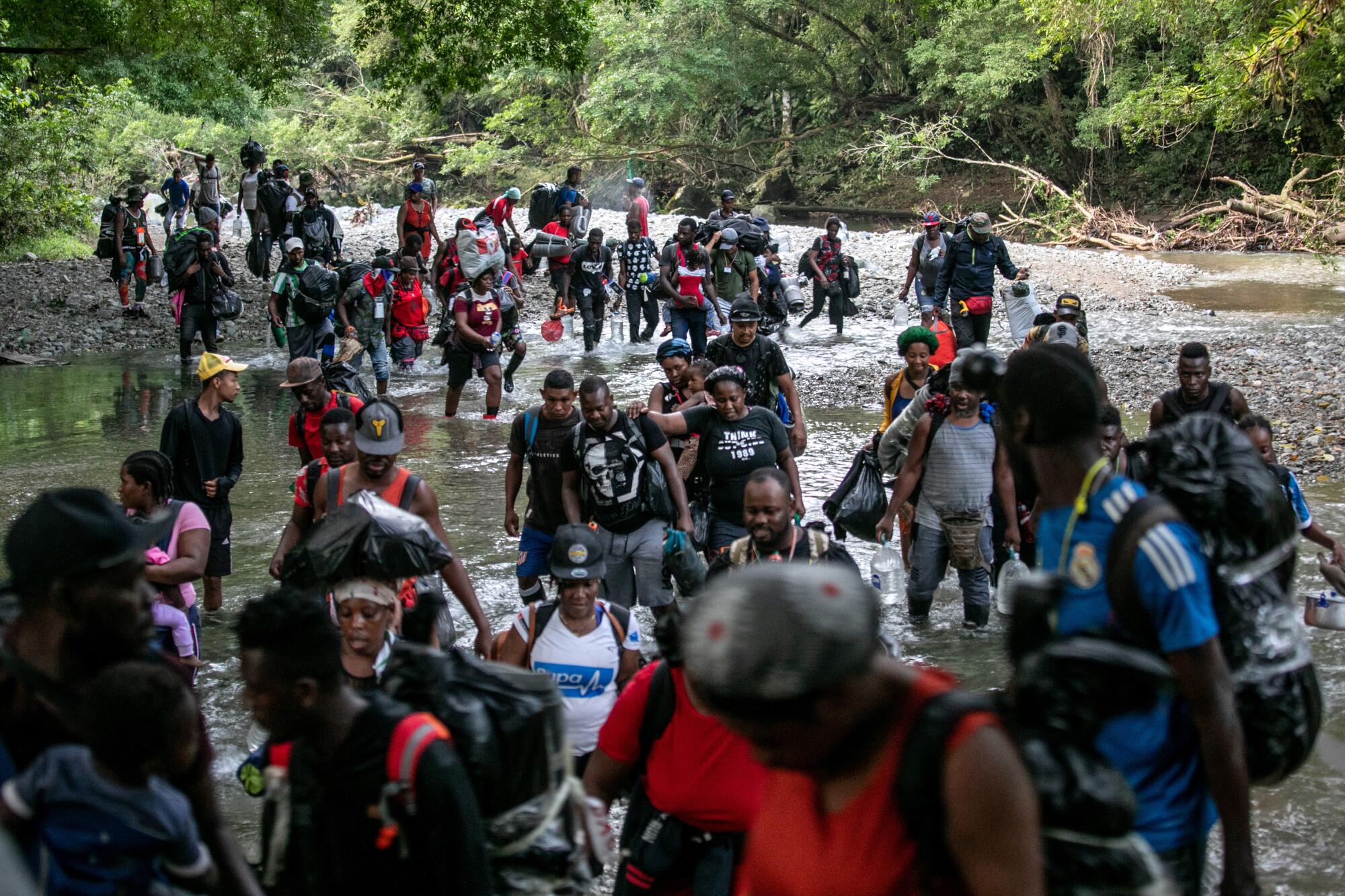
- Share via
ACANDÍ, Colombia — The boats started arriving midmorning to this fishing town perched on Colombia’s torrid Caribbean coast. Disembarking passengers were edgy but excited to be on the move again.
They clambered onto a dock, hoisting suitcases, water jugs, camping gear and children up wooden stairs to a boisterous welcome party of smugglers, motorcycle taxi men and horse-and-cart jockeys.
A boat company employee with a plastic tank on her back showered disinfectant everywhere.
Then the haggling began.
“Thirty dollars per person?” said Ernest Tassi, who is from the African nation of Cameroon, aghast at the fee for a motorcycle jaunt five miles toward the border with Panama. “Too expensive!”
Tassi, 35, a French speaker who picked up Spanish while stranded in Ecuador during the pandemic, was translating for a contingent of Haitians — men, women and children — he had met on his journey north.
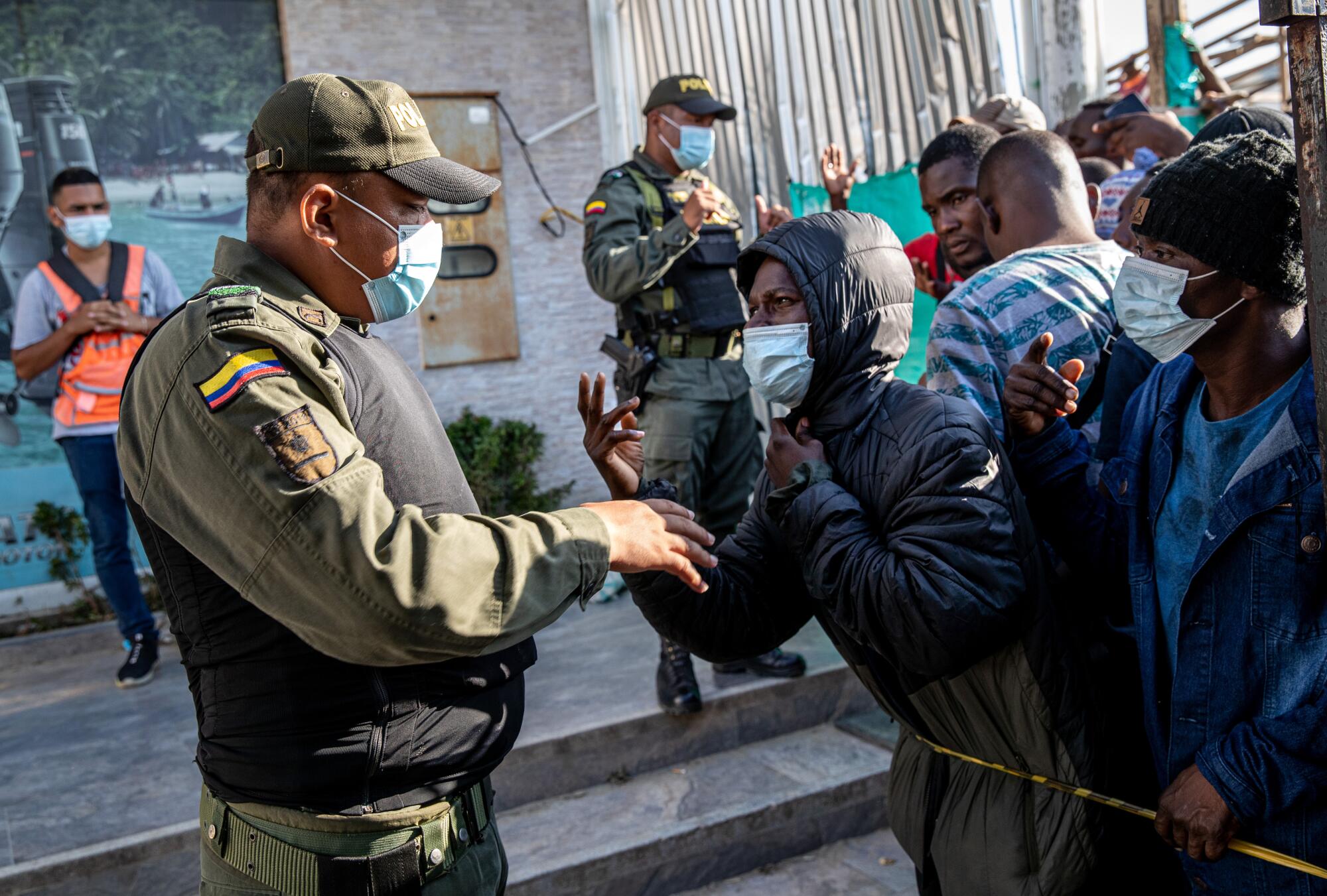
This remote sliver of northwest Colombia has become one of the world’s busiest migration corridors. Geography dictates that anybody traveling overland from South America has to pass through it to reach the United States.
The migrant traffic began ramping up about a decade ago, then dropped sharply in 2020 as countries shut borders in response to the pandemic. This year has seen an astonishing rebound as travel restrictions have eased, releasing pent-up demand at a moment when regional economies have tanked, squeezing job opportunities and incomes.
In the first nine months of this year, authorities in Panama logged a record 91,305 foreigners entering the country overland from Colombia — more than during the seven previous years combined.
The migrants include Latin Americans, Africans, Asians and Middle Easterners. About 75% are Haitians — many of whom had been living in Chile and Brazil.
The smugglers and drivers at the dock here in the town of Acandí are in such high demand that they were unwilling to lower their prices for Tassi.
He conversed with them in Spanish and then relayed the details in French to his Haitian co-travelers, who broke it all down to the rest in Haitian Creole. They would be riding on the back of motorcycles to a camp to spend the night.
After grabbing a bite to eat and a drink from dockside vendors, the group set off in a raucous, “Mad Max”-in-the-jungle convoy.
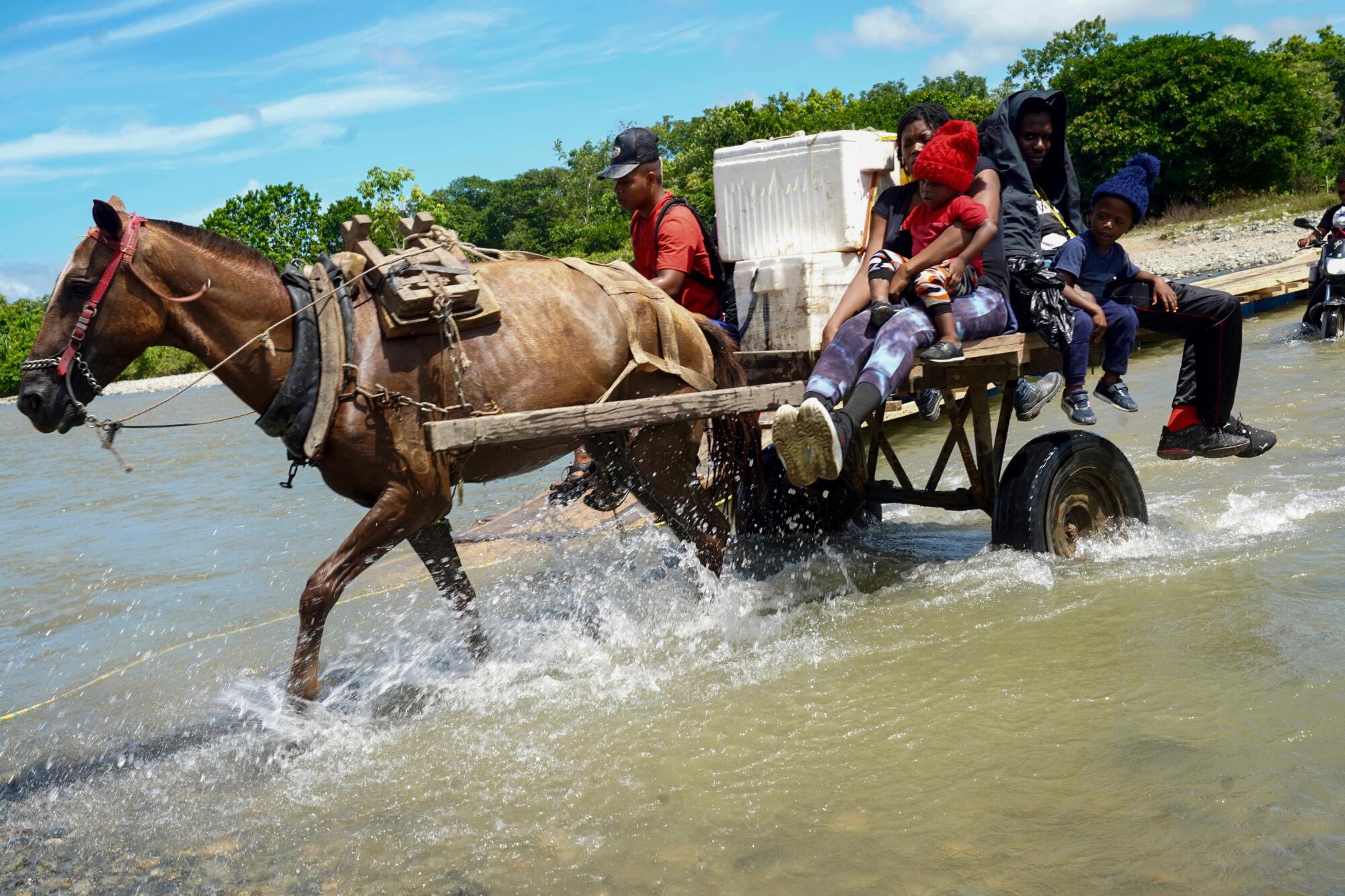
They were headed toward the Darien Gap, the narrow strip of rainforest that joins South America and Central America.
It had once been regarded as impenetrable. But migrants and smugglers have turned the wilderness into a tropical turnstile despite myriad dangers — including poisonous snakes and insects, thieves and sundry illnesses.
Panamanian authorities have recorded at least 50 migrant deaths this year in the Darien, though the real number is probably much higher, since many bodies are never recovered.
From Panama, the migrants must make their way through Costa Rica, Nicaragua, Honduras, Guatemala and Mexico to the U.S. border — a 2,500-mile grind in which they face ruthless bandits, unscrupulous smugglers, corrupt cops and squalid camps.
The staging ground for this odyssey is the Colombian town of Necoclí, where hundreds of migrants from around the world are camped out on the palm-fringed beaches. Thousands more stay in hotels and private homes.
They are all waiting to cross the Gulf of Urabá to Acandí, 90 minutes away, on passenger boats that each carry about 50 people.
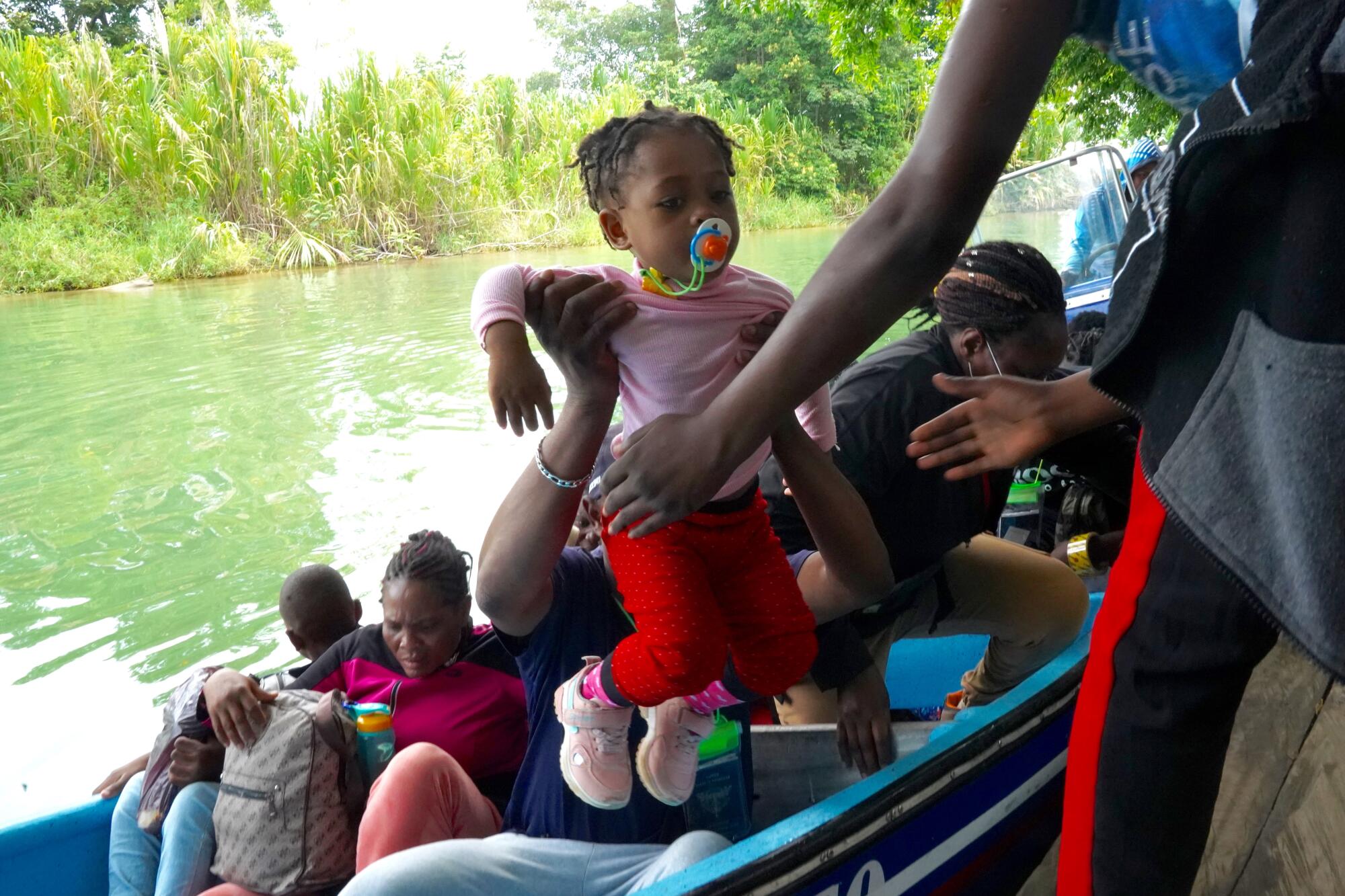
The wait is often a month or more because the government — in a bid to ease the bottleneck on the route to Panama — lets carriers sell only 500 tickets a day. Each morning, migrants gather at the boat berths, hoping to score last-minute rides, perhaps benefiting from a cancellation or no-show.
Kidnappings and assaults of migrants — rampant in Mexican border cities — are unusual in Necoclí, where the traffic is well-organized, if sometimes chaotic. The global influx is a windfall for the faded tourist locale on the edge of endless expanses of banana plantations.
Among those camped out recently were Luther Victor, his wife, three children and his brother. An overturned wooden fishing boat on the beach near their tent served as a communal table and place to hang drying clothes.
Victor and his family were among hundreds of thousands of Haitians who sought refuge in Brazil and Chile after Haiti’s devastating 2010 earthquake. They were welcomed at first.
Victor, 46, worked as a welder in southern Brazil. But a construction boom fizzled. Then the pandemic made everything worse, and he and his family — like so many Haitians in South America — decided to make a run for the United States.
In September, they shed their belongings and decamped, taking public buses through Brazil, Peru, Ecuador and Colombia.
“My aunt in Miami tells us life is better there, we can find work, education for our kids,” Victor said. “In Brazil you work and work, but hardly earn enough to pay the rent and feed your family.”
The migrants amassed here speak of loved ones and former neighbors now in Miami and New York, place names that roll off their tongues as easily as Port-au-Prince and Lagos, Mumbai, Havana and Caracas. They exude the determination of people for whom there is no going back.
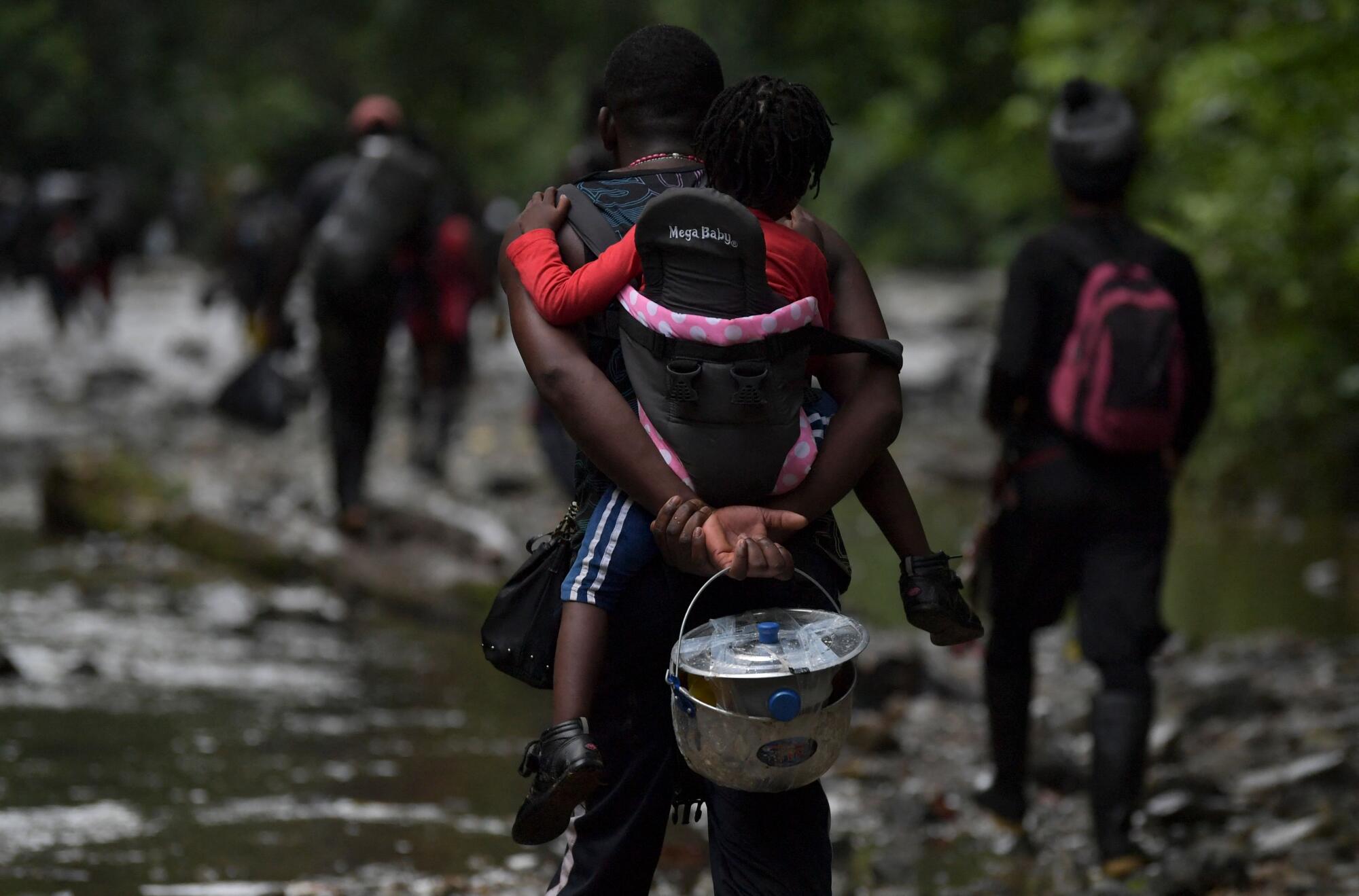
But for now, they have no choice but to wait in Necoclí.
Many soon exhaust savings and plead for more cash from relatives in the United States. They line up for hours at the few ATMs. Money changers fingering wads of dollars are seemingly everywhere. Price gouging is rife. With few public facilities, bars and restaurants even charge migrants to use the restrooms.
Sidewalk vendors hawk an array of camping goods — tents and sleeping mats, hiking boots and portable stoves, insect repellent and a dark liquid in unlabeled amber bottles that supposedly keeps snakes at bay.
The stranded legions stroll back and forth along the seaside Malecón, checking out the wares, stopping for refreshment, putting a few pesos down on games of chance — including a hand-crafted roulette wheel that a Haitian entrepreneur set up on the esplanade. The forever soundtrack is a Haitian beat from sundry boom-boxes.
“We’ve been here in Necoclí 22 days. We can’t wait any longer!” said Darlene Martínez Pérez, originally from Port au-Prince, who was bound for Florida.
She resided in the Dominican Republic, which borders Haiti, for 11 years before setting off for Colombia.
Like many, she was appalled at the recent images from Del Rio, Texas, where Border Patrol agents on horses pushed back throngs of Haitians who had camped along the Rio Grande. U.S. authorities expelled thousands back to their Caribbean homeland.
“That was very sad and hurtful,” Martínez Pérez said. “I would like President Biden to know that we suffered a lot to come here. Neither horses or beatings will hold us back at this point. We can’t go backward now.”
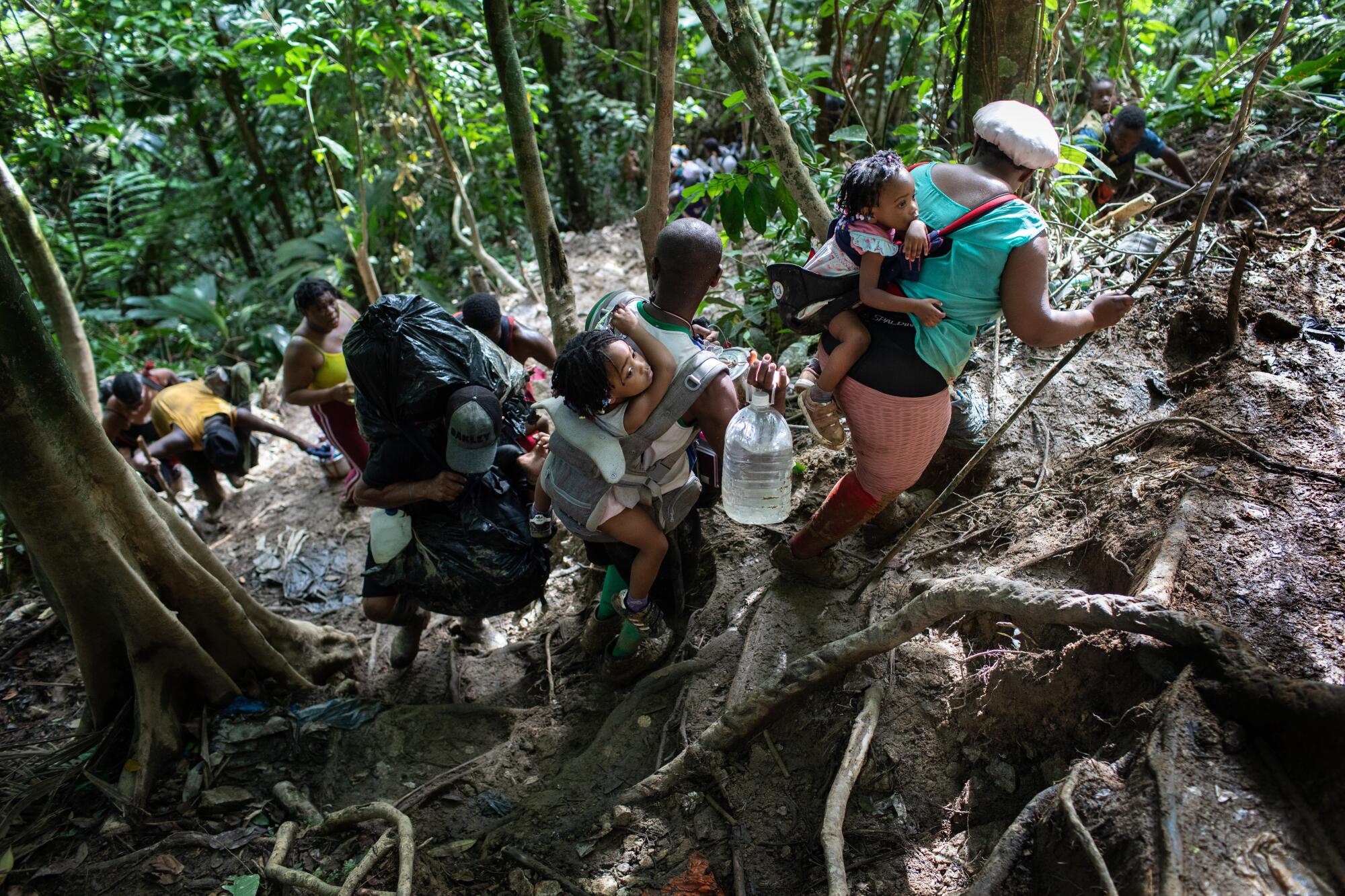
The scenes in this swath of Colombia illustrate how illicit migration to the United States is evolving.
Migrants headed for the U.S.-Mexico border once came almost exclusively from Mexico and Central America. Now the movement has taken on the multinational character prevalent in Europe, where people from the Middle East, Asia and sub-Saharan Africa converge on borders after marathon sojourns often featuring dashes through war zones, perilous sea crossings and surreptitious travel inside sealed containers.
“There was always this assumption that geography is a deterrent to migration — that’s not true anymore,” said Chris Ramón, an immigration consultant in Washington. “People are willing to take on these really dangerous journeys to make it to the border.”
The migrants entering Panama during the first nine months of this year included 68,763 Haitians — among them 12,087 children born in Chile and Brazil — 12,870 Cubans, 1,529 Venezuelans, 942 Bangladeshis, 543 Senegalese, 436 Ghanaians, 415 Uzbekistanis, 294 Indians and 293 Nepalese. Roughly 1 in 5 crossers were children.
“We are here as tourists,” said a bespectacled young man from Nepal ambling along the Malecón in Necoclí with a group of countrymen. “Just visiting,” he added, declining to give his name.
Moraima Zamora, 57, of Havana settled in a tent in what is known as the Cuban stretch of the beach. She hoped to join her husband in Miami. After leaving the island, she had worked as a housekeeper and factory hand in the South American nation of Guyana, sending money back to her daughter and two grandchildren in Cuba.
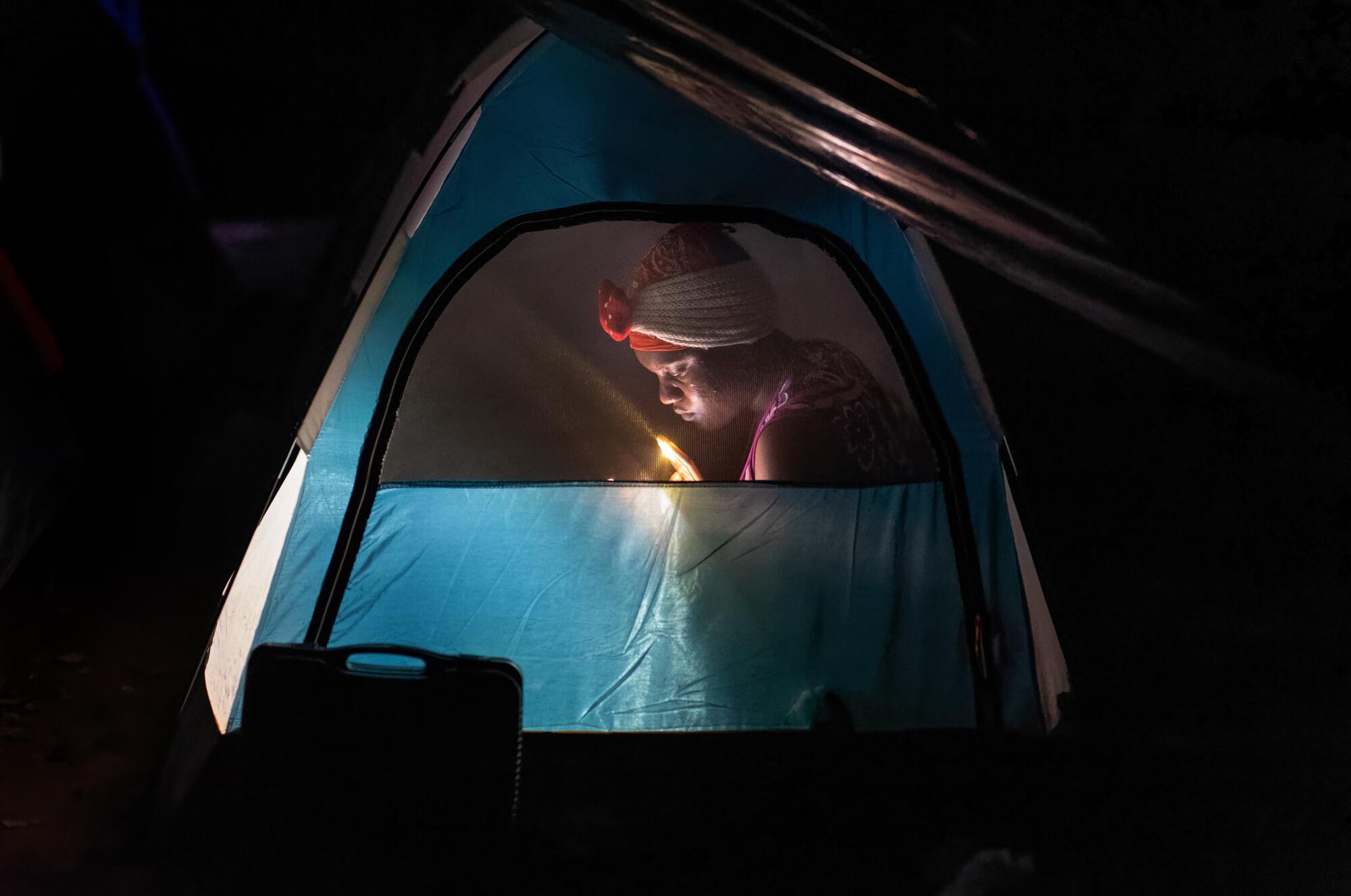
“No way I am going to wait here a month to get a ticket to cross,” Zamora said. “My husband is going to send me some money, and I’ll find a boat and move things forward.”
The protracted delays in catching a boat have spawned a risky clandestine business transporting migrants across rough waters.
Just this month, the bodies of three women — two from Haiti, one from Cuba — were found after a boat illegally ferrying migrants capsized. Six others were missing and presumed drowned.
Those dangers explain why many prefer to wait in Necoclí for the safer boats, despite the boredom and drain on resources.
“We have heard America is a place you can be free, you can raise your family and hope that your children will advance, study in the university,” said a man from Sierra Leone as he boarded a legal craft.
One of a group of 14 Africans who had flown to Brazil and then traveled here overland, he said he was 35 and would give only his first name — Osman.
“We want freedom,” he said.
From Acandí, the trip on motorbike or horse takes migrants on muddy tracks past grazing cattle, across streams and rivers, up and down hills and through stretches of dense forest before the entry point to the Darien. From there, it’s a sweltering two- to seven-day hike through the mountains to Panama.
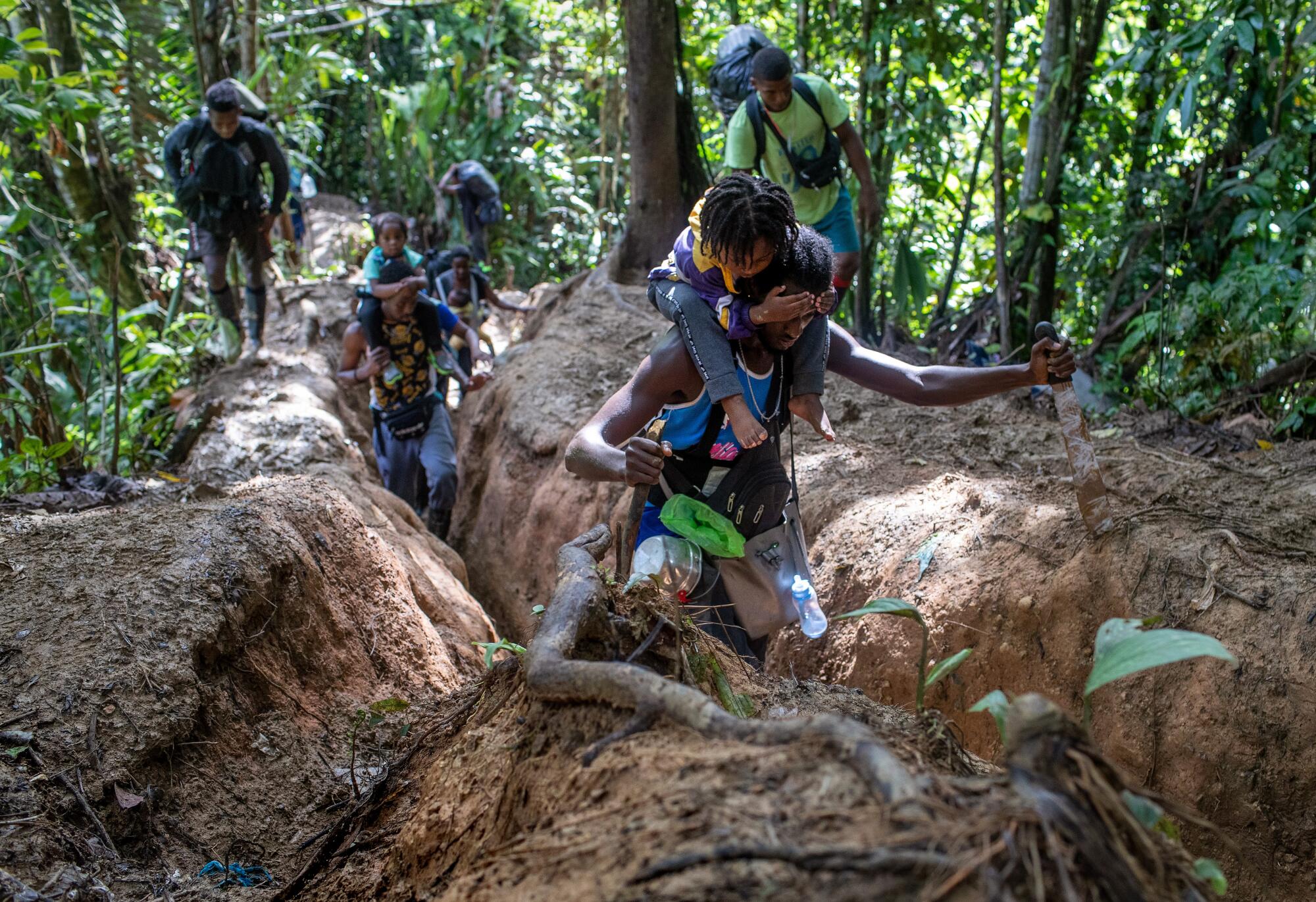
Those fortunate to have some cash left can hire guides to help for at least part of the march.
Makenson Dutreil, 35, who said he was bound for New York, was among a half-dozen Haitians — including a 5-year-old girl wearing plastic sunglasses with a stars-and-stripes motif — embarking on the final thrust to the Darien atop a pair of horse-drawn carriages.
They stopped for a meal of rice and chicken at a riverside stand under the management of Absalón Álvarez, 46, an intrepid entrepreneur who also built a toll bridge of planks from a ceiba tree and began charging each motorcycle and cart about 55 U.S. cents to cross the Acandí Seco river.
Refreshed, Dutreil and others were upbeat.
“At least we are on the move again,” Dutreil said as his entourage rolled toward the jungle.
Special correspondents Liliana Nieto del Río and Juan Carlos Zapata in Necoclí and Acandí, Colombia, and Cecilia Sánchez in Mexico City contributed to this report.
More to Read
Sign up for Essential California
The most important California stories and recommendations in your inbox every morning.
You may occasionally receive promotional content from the Los Angeles Times.



